Zapatista Autonomy: A Destituent Experiment?
Jérôme Baschet
The Zapatista experiment has been underway in Chiapas for over a quarter century. It constitutes one of the most remarkable living utopias that can be found anywhere in the world today. The Zapatistas summarize their experiment using the word “autonomy.” In the following article, Jérôme Baschet describes what the Zapatista experiment does to the concept of autonomy. Through the implementation of practices of self-government, autonomy emerges as the expression of a non-state politics, bringing the question of its difference from state politics into new relief. At the same time, autonomy also refers to the elaboration of communal forms of life understood as “proper.” This term signifies the capacity to resist the imposition of economic heteronomy that is elsewhere so brutal and destructive. Can we characterize the Zapatista rebels’ experiment as an example, at once eminently concrete and impure, of a destituent process?
Part of our new series "Weavings" exploring the contemporary emancipatory tradition in Latin America.
Other languages: Español, Français, Türkçe 1 ve 2 ve 3
The legacy of the Zapatista movement has at times been reduced to the audacious armed uprising on January 1, 1994, when cries of “Ya Basta!” challenged the then-uncontested supremacy of the neoliberal model and refuted the chorus of voices announcing the so-called “end of history.” In the years that followed, the Zapatistas frequently made headlines with their unusual declarations and their public activities, such as the Intercontinental Gathering for Humanity and Against Neoliberalism (1996) and the March of the Color of the Earth (2001). But to look no further would mean missing the Zapatistas’ significance as a territorialized, practical experiment in autonomy that has grown in strength and depth since 2003, with five Councils of Good Government federating the twenty-seven Rebel Zapatista Autonomous Municipalities established since 1994.1 This is why the Zapatistas are often rightly mentioned alongside the Kurds of Rojava as inspiring examples of how to create forms of collective organization that refuse to conform to both the norms of capitalist commodification and the logic of state politics. In fact, what the Zapatistas have created in the rebel territories of Chiapas is, despite its challenges and limitations, one of the most remarkable liberated spaces — or real utopias — that exist anywhere in the world today, whether in terms of geographic size, longevity, or radicality.2
The Zapatistas use the term autonomy to describe their efforts to build, in the present, a tangible other world, one that is not only possible, but urgently necessary. We will briefly summarize its chief characteristics, which we hope will be an adequate basis to analyze what the Zapatista experiment does to the concept of autonomy. Although their autonomy is clearly collective and has nothing in common with the modern autonomy of individual subjects, neither is it restricted to the right of autonomy granted to original peoples through international treaties, such as the ILO’s Convention 169, since, for the Zapatistas, autonomy is not specifically Indigenous. Their vision of autonomy coincides with that of traditions of struggle marked by a critique of representation, and, in this case, it is the affirmation of a politics that does not center the state — simply put, it is a non-state politics. Though we will need to concretely outline the distinction between state and non-state politics, we will also see that this approach is insufficient: autonomy, as it has emerged in the case of the Zapatistas, is meaningful only inasmuch as it allows for the extension of forms of life understood as proper. This involves, first of all, resisting and escaping the imposition of the norms that constitute the world of the economy. As the Zapatistas describe it, autonomy in its broadest sense means “to create a new life.”3 This will provide the foundation, finally, to inquire whether the Zapatista rebels’ experiment offers an example, at once eminently concrete and impure, of a destituent process.
Defending and Extending a Proper Way of Life
Zapatista autonomy is the product of a specific history that both made it possible and explains its particular traits. On this subject, though, we must limit ourselves to directing the reader towards other works.4 Before focusing on the organized bodies and procedures of Zapatista self-government, it is necessary to describe the way of life that the rebels struggle to defend, which, it can be argued, largely breaks free of the heteronomy of capitalism’s fundamental categories.
The Zapatista experiment in autonomy is an expression of a fierce attachment to a communal form of life, one that is closely tied to a particular relationship to land and territory. Such a reality is a total anomaly in the era of global capitalism, which would go to any lengths to liquidate it. For the Maya Zapatistas in Chiapas and the other Indigenous peoples involved in the Congreso Nacional Indígena, defending this way of life involves arduous struggle, and autonomy strengthens their position. This entails refusing the implementation of neoliberal policies that seek to liquidate community ownership of land (beginning with the reform of Article 27 of the Constitution in 1992), resisting the effects of the North American Free Trade Agreement and of programs that promote the growth of market agriculture, and committing to the defense of their territories against big mining, energy, tourism, and infrastructure projects, such as the badly named “Tren Maya.”
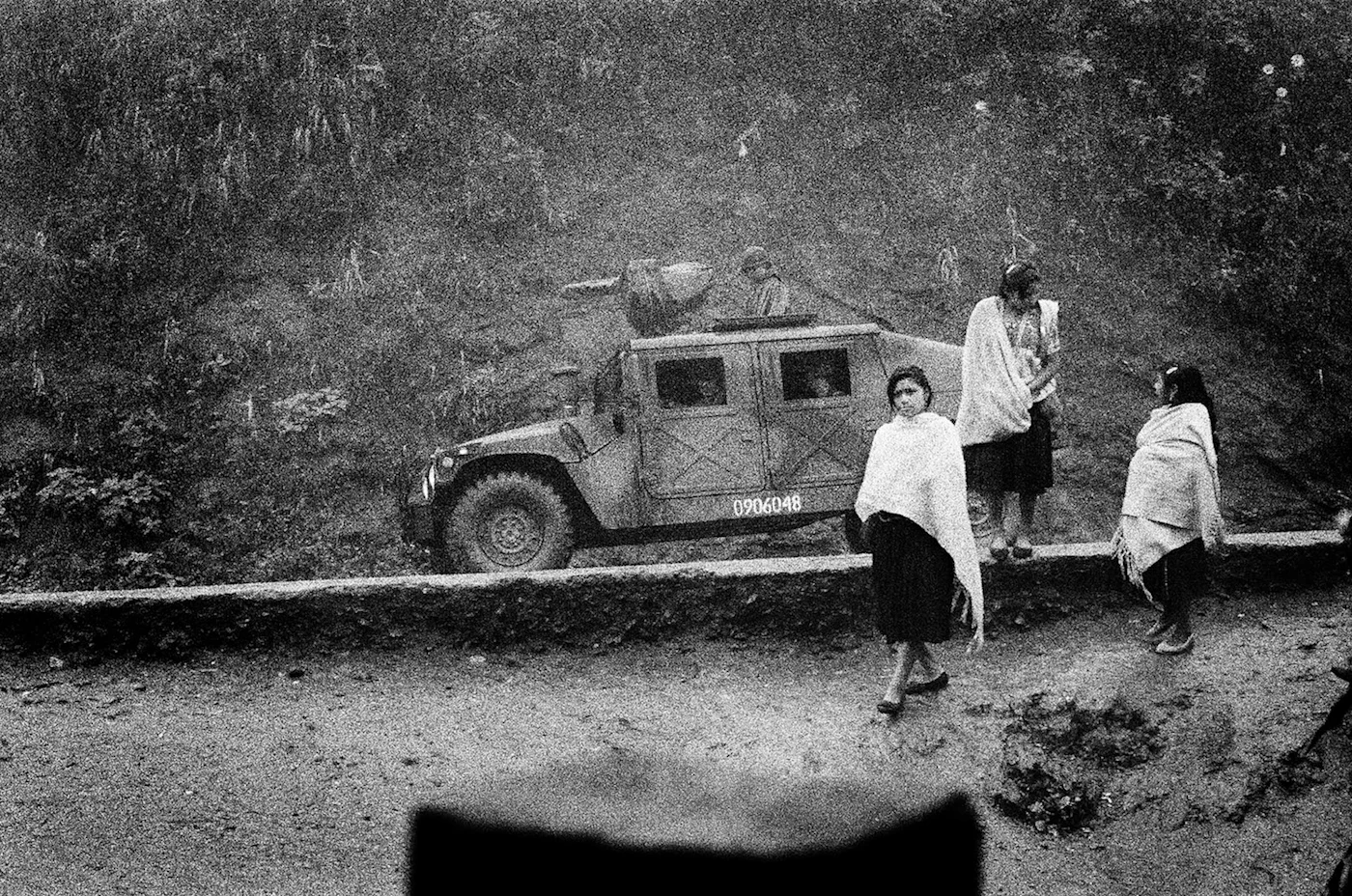

Even though it is not the result of any sort of timeless essence, their community practices are rooted in Indigenous traditions. This instills in life an ethos of collectivity, visible notably in the practice of holding assemblies for discussion and decision-making, the use of mutual aid and collective work, the importance of celebrations and rituals, and even the various forms of collective land ownership.5 In terms of their territory, with its cultivated and inhabited regions as well as its forests and mountains, which are seen as essential to the cycles of life, it is the community’s proper place, without which its existence would be inconceivable. The land is both the field under cultivation and the all-encompassing life force that cannot be owned and might be given the name of Mother Earth: “For us, as Zapatistas, as Indigenous peoples of Mexico, the Americas, or the world, the earth is our mother, the memory and resting place of our ancestors, the home of our culture and our way of life. [...] The earth does not belong to us, we belong to her.”6
However, the Zapatistas’s approach to community is unusual. Although they risk their lives in its defense, they are wary of being closed into a fixed, exclusive Indigenous identity.7 Concretely, their insistence on community life is associated with a no-less intense effort to revitalize and transform it in a liberatory direction — a double task that women in particular throw themselves into energetically, as they have the most to gain from changing traditional gender relations.
Some examples of the renewal of communal ways of life are the spread of cooperatives in numerous productive fields, as well as the growth in small-scale farming, given new life through agroecology.8 The latter has in fact grown in area, due to the tens of thousands of hectares of arable land recovered following the 1994 uprising. These lands allowed for the construction of new villages and also for the development of novel forms of collective work, with crop and livestock production occurring on a community, municipal, or regional scale to support projects for building autonomy and the EZLN’s national and international initiatives. As the Zapatistas emphasize, the large-scale recovery of land — their primary means of production — is the material basis that made it possible to create autonomy.9
Particular attention should be paid to the fact that, entirely outside state structures and at the price of significant collective mobilization, the Zapatistas created their own healthcare system (with regional clinics, smaller municipal clinics, and healthcare workers stationed in every community), as well as their own education system.10 They built primary and secondary schools, developed educational curriculum and programs, and trained the young people who do the teaching, with the intention for education to be rooted in the concrete experiences of communities as well as within the shared struggle for “a world where many worlds fit.” It is particularly remarkable that these accomplishments were achieved largely without exchanging money or relying on the wage form.11 This means the promotores de salud and the promotores de educación carry out their work without being paid in money, relying instead on the community’s commitment to meet their material needs or, for those with land, to work their parcel in their stead. These different modalities of exchange allow the collective action that constitutes autonomy to occur, while making the least possible use of those forms characteristic of the capitalist universe, first and foremost money and wages. The Zapatista rebels have largely escaped from the demands of productivism, quantitative maximalism, and the spread of competitive ways of being that are basically the norms of the world of the economy. In doing so, they struggle to preserve an ethic of living well that they call vida digna — an ethic that values the qualitative aspects of life and conceives of individual existence through its relationship with its collective dimension and its nonhuman world. In particular, the absence of time pressure contrasts noticeably with the effects of the modern world’s abstract, accelerated time.12
Organized Bodies of Self-Government
We will now describe the political organization that has been established in the rebel territories of Chiapas.13 It takes place on three levels: the community (village); the municipality (containing several dozen villages); and the region (large areas allowing for coordination across several municipalities). At each of these levels, there are assemblies and elected authorities serving two- or three-year terms (such as the agente municipal at the municipal level, the autonomous municipal councils, and the Junta de buen gobierno in each region).
Considering here only the activities of the Councils of Good Government, it is worth noting that they make a point of working towards coexistence between Zapatistas and non-Zapatistas, who live together within a single territory and have two competing political systems, autonomy on the one side and the constitutional structures of the Mexican state on the other. They also deal with situations of conflict stirred up by the official authorities, as part of a context of permanent counter-insurrectionary hostilities. Most importantly, the Councils of Good Government have to remedy any imbalances between the different municipalities in their region and try to improve coordination between them on issues of mutual importance. They have a duty, in conjunction with the assemblies, to propose and develop new projects to help overcome the difficulties of collective life, to encourage the equal participation of women, to defend the territories and protect the environment, or still to expand proper productive capacities.


Additionally, the autonomous authorities keep their own civil registry and have justice responsibilities at all levels, from the community to the region and the Council of Good Government.14 Their justice, based on mediation, is as far from the principles of state justice as can be, seeking agreement and reconciliation between the parties on the basis of community service and forms of reparations paid to the victims or their families — but without any recourse to punitive incarceration. In contrast with the extreme formalization and specialization of law, autonomous justice shows that conflicts can be resolved and violations of collective rules addressed by people who have no specific training. The practice of autonomous justice is satisfying enough that it is widely sought after, including by non-Zapatistas, who appreciate not only the absence of corruption, but the fact that it is completely free of charge and understanding of Indigenous people's realities, in stark contrast with the Mexican constitutional justice system.
Returning to the political organization of autonomy, it is based on the interplay between the role of the assemblies (which is crucial, without it being the case that everything is decided horizontally) and that of the elected authorities who are said to “govern while obeying” (mandar obedenciendo). Concretely, what are the modalities for the exercise of the tasks of government that make the principle, “The people rule and the government obeys,” as is proclaimed on modest signs installed at the entrance to Zapatista territories, a practical reality?
One characteristic is how the positions are designed, in that they are framed as “responsibilities” (cargos) and do not come with any pay or other material benefit.15 In fact, no one nominates themselves for these roles; rather, it is the communities who approach those who they believe should fill them. These responsibilities are accepted on the ethical basis of service to the community.16 This is expressed by the seven principles of mandar obedeciendo (which include, “serve, not serve yourself,” “propose, not impose,” and “convince, not defeat”).17 Note as well that these responsibilities are always carried out in a collegial manner, with minimal specialization within government bodies, and always under the control of, on the one hand, a commission tasked with auditing the accounts of the different councils, and, on the other, the whole of the population, since the positions can only be held for a single term and can be revoked at any time, “if the authorities are not doing their jobs properly.”
The men and women who hold office come from the communities and remain ordinary members of them. They do not claim to have been elected due to any special skills or unusual gifts. Members of the Councils of Good Government can be said to be, “not specialists in anything, much less in politics.”18 If there is a single trait that characterizes Zapatista autonomy, it is the despecialization of political activity. This involves recognizing that authority can be exercised from a position of not-knowing. Indeed, members of autonomous councils gladly show how unequipped they are for the task that has fallen to them: “No one is an authority and we all need to learn.” But they also emphasize that, precisely because they recognize their lack of knowledge, those who temporarily hold a responsibility can be a good authority, one that listens to and learns from everyone, knows how to recognize its mistakes, and allows itself to be guided by the community in making decisions.19 In the Zapatista experiment, entrusting the work of governing to men and women with no special capacity to carry it out concretely constitutes the ground from which mandar obedenciendo can grow, and it serves as a bulwark against the risk of a separation emerging between the governors and the governed.
Finally, the way decisions are made is crucial. The Council of Good Government submits its main proposals to the regional assembly. If large projects are involved or if no clear agreement is reached, the matter is referred to the delegates from every community, who carry out consultations in their respective villages in order to return to the next assembly with agreement, refusal, or amendments. If necessary, proposed amendments are discussed and the assembly creates a new proposal, which is then sent back to the communities. Sometimes, several back-and-forth trips between the council, the regional assembly, and the villages are needed in order for a proposal to be considered accepted. This process may be heavy, but it is nonetheless necessary, as the Zapatistas recognize: “A plan that is not analyzed and discussed by the people fails. It has happened to us.” This is why, “now, all projects are discussed.”20
Horizontalism and the Role of Authority
It is important to avoid a purely horizontalist reading of Zapatista autonomy, supposing the absolute primacy of the assemblies and everyone’s equal participation in the decision-making process.21 Certainly, the mandar obedencio is a radical departure from the relation of power-over that characterizes the state machinery as an apparatus for dispossessing the people of their capacity for collective decision-making, which leads to a concentration of political affairs in the hands of experts. Although it may be surprising to see the relationship between people and government still being described in terms of commanding and obeying, it is important to understand that paradoxically associating these two opposite relationships entirely subverts their meaning: the government can only command to the extent that it is acting in accordance with the ongoing expression of the community’s will. The explanations provided during the Escuelita zapatista, though, open the door to a more nuanced reading: there is a time when the people rule (manda) and the government obeys; there is a time when the people obey and the government rules (manda).22 Without being fully separate, the two opposing relationships become partly independent due to the distinct moments when the relationship operates in one direction or the other. The government obeys because it has to consult and then do what the people demand, and the government commands because it has to apply the decisions that emerge after collective deliberation and ensure compliance with them. And it also commands when, in the context of a conflict with the Mexican state and the paramilitary groups it supports, an urgent situation requires taking action without being able to consult.


The authorities are seen as having one particularly important role: the duty of vigilance, initiative, and encouragement. As maestro Jacobo put it, “Authorities lead, guide and encourage, but do not decide or impose; it is the people who decide.”23 Although the municipal councils and the Councils of Good Government can implement only what has been debated and approved by the assemblies, the specific contributions of the authorities during the decision-making process should not be ignored or underestimated. This means the unique role of those to whom communities have temporarily granted the task of “being the authorities”—an authority without authoritarianism that does not involve commanding or coercing—should be understood as that of a motor and a linchpin, used to strengthen the capacity for collective action. It is thus neither a true power-over that one part of the collective could seize and wield over others, and nor is it purely horizontal, as this would run the risk of falling apart due to a lack of initiatives or the capacity to carry them out.24 In this, observing the Zapatista experiment allows us to recognize the interplay between two principles. On one side, decision-making ability is held largely by the assemblies, with their different levels. On the other, those who take on the rotating and revokable responsibility to govern have a special role, providing initiative and encouragement, mediating between the people and their capacity to self-organize, although they remain subject to the twin risks of going too far in carrying out their role and of not going far enough.
Non-Dissociative Modalities of Delegation
Leaving behind the opposition between representative and direct democracy, analyzing Zapatista autonomy invites us to grasp the interplay between the roles of the elected authorities, the delegate assemblies (at the municipal and regional levels), and the community assemblies. The modalities of delegation at play here are crucially important, for the authorities no less than for the members of the assemblies. In this regard, we propose to establish a specific distinction between forms of delegation that are structurally dissociative and those that can be considered non-dissociative (or dissociative to the least possible extent). The former are intended to produce separation and capture for the benefit of the governors/dominant: it follows that the methodical organization of traditional forms of representation tends to entail the absence of those represented. The latter tend towards reducing the dissociation between the governors and the governed as much as possible.
There is then the matter of defining precisely what differentiates the one from the other. The Zapatista experiment invites us to consider the following traits: elected positions are limited to a single, short term and are immediately revokable; responsibilities are carried out in a collegial manner without personalization; other bodies have control; there is limited concentration of decision-making capacity, it being largely shared with the assemblies; and the presence of strong collective ethics and listening skills. But most important of all is the effective despecialization of political work, which, rather than being hoarded by a specific group, is meant to be shared around as widely as possible: “We must all in turn be the government.”25 As mentioned above, recognizing that the elected authorities know no more than anyone else about public affairs is the condition for fully despecializing politics. Finally, it is critical that the way of life of those carrying out a responsibility not dissociate from that of everyone else. This is why members of the Councils of Good Government (located in regional centers, the caracoles, often quite far from the villages) carry out their work in rotating periods of ten to fifteen days, taking turns so as to not interrupt their usual activities for any great length of time, allowing them continue looking after their families and land. This is seen as indispensable in order to prevent a separation from reappearing between the common universe and the lifestyle of those who, however briefly and with however much oversight, take on a particular role in collective life.
Yet, the risk of dissociation reemerging between the governors and the governed is ever present. This means a politics of autonomy is only worth as much as its practical mechanisms: it must continually devise to struggle against this risk and continue tending towards the dispersal of authority’s functions. Of course, there is no infallible way of distinguishing between dissociative and non-dissociative forms of delegation, but the opposition is no less relevant for that. We would even contend that it is central to understanding the difference between state politics (based on methodically dispossessing the collective of its potential and on authority condensing into power-over) and non-state politics, which strive to do away with the dissociation between the governors and the governed and tirelessly struggles against its reproduction, so that the exercise of authority remains a manifestation of collective potential.
Self-Government vs. State Separation
“They fear we will realize we can govern ourselves”: this lesson, delivered by maestra Eloisa , is a perfect distillation of the experience and true meaning of autonomy.26 She has done no less than demolish the foundations of the modern state. The frontispiece of Hobbes’s Leviathan shows cities and countryside emptied of their inhabitants, while a crowd of subject appears to be enveloped inside the gigantic body of the sovereign who dominates the territory, signifying that the people exist only once they have been stripped of their potential to the benefit of whoever incarnates the State.27 In Giorgio Agamben’s analysis: “The people, that is to say, is the absolutely present which, as such, can never be present and thus can only be represented. If we call ‘ademia’ (from dēmos, the Greek term for people) the absence of a people, then the Hobbesian State—like every State—lives in a condition of perennial ademia.”28 In the modern state’s later forms, the absence of the people assumes differentiated modalities, but these are always marked. In Hegel’s view, it is characteristic of the people that they are not capable of governing themselves alone and are “that group which does not know what it wills.”29 Due to their ignorance, the people must rely on “the highest civil servants,” as only they are capable of acting for the common good.30
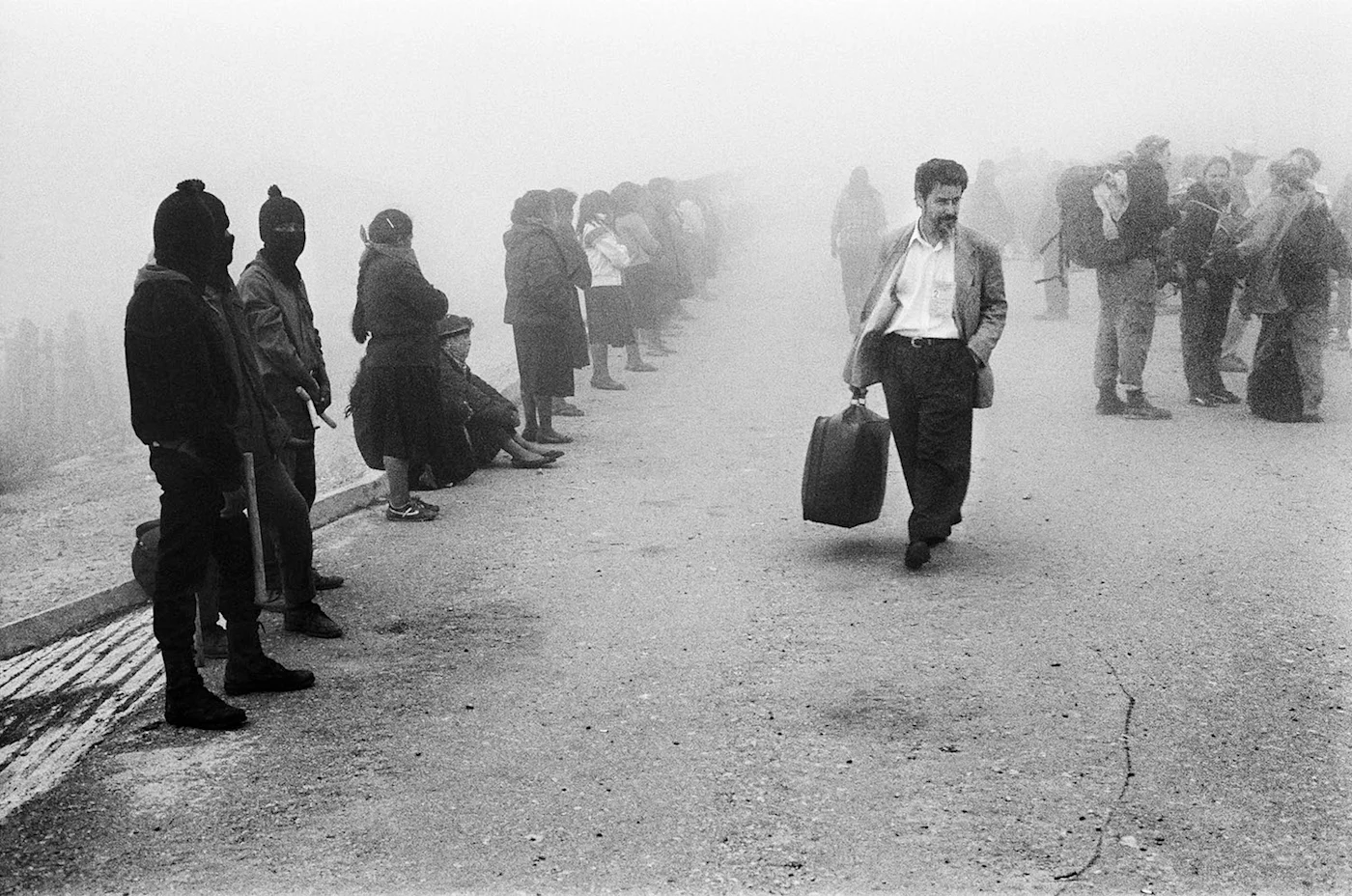
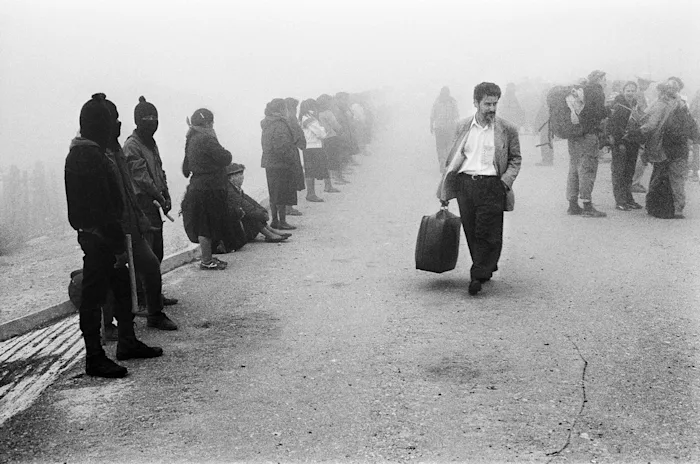
Today, despite the stated values of formal democracy, the phenomenon of dispossession benefitting the political class and experts of all sorts is becoming more and more apparent, and it is in fact central to what might be called the crisis of representation. Electoral processes for choosing officials and parliamentarians simply serve to legitimate the dispossession of collective potential and the implementation of the same policies dictated by the market and the interests of dominant economic actors. We can conclude then that ademia is consubstantial with the state, even democratic ones (in the extremely narrow sense of electing governors and representatives).31 The state can be characterized as a mechanism for capturing collective potential—which is referred to as “sovereignty,” and is only said to reside in principle with the people so as to ensure they are practically dispossessed of it. The state is thus a machine for consolidating a separation between the governors and the governed, producing the absence of the people in order to intensify their submission to the current heteronomous social norms of the world of the economy.
We can clearly see that autonomy is the exact opposite of state-centric politics. It is based on each person’s capacity to organize, decide, and act for themselves. It presumes a common dignity that refuses to be suspicious of incompetence or ignorance, as this is used to justify dispossession and marginalization. It is the extension of collective potential to act in accordance with forms of life experienced as proper. It is the unending struggle to keep those who take on temporary responsibilities from dissociating themselves from the common universe of life. This is why autonomy is a non-state politics and why the Councils of Good Government in the Zapatista autonomous territories can be described as non-state forms of government.32
In fact, while the Zapatistas reject state-centric politics in theory and in practice, they embrace the notion of government, as is evident from the name given to the Juntas de buen gobierno. Is it then that our critique of state separation is lacking a critique of the paradigm of government, which Michel Foucault shows is a significant factor in the constitution of modern forms of power?33 In his analysis, governmentality is gradually winning out over the more classic dimensions of state power, namely the penal and disciplinary dimensions, and it increasingly reaches beyond state institutions, residing in biopolitical apparatuses and in the infrastructure involved in regulating reality itself, which allows it to “conduct the conduct” of populations.34 Nonetheless, there are relevant critiques of Foucault’s arguments, notably those developed by Pierre Dardot and Christian Laval: rather than the idea that state sovereignty is being overtaken by biopolitical governmentality, a better hypothesis may be that forms of governmentality are flourishing within the logic of sovereignty itself, or at least in close relationship with them.35 The resurgence of authoritarian and repressive practices by states that had been won over to the neoliberal path seems to demand an urgent analytical reorientation in this vein.
Where the Zapatistas are concerned, it should be recognized that what they call “government” has little to do with governmentality, which has become a major—if not the dominant—dimension of techniques of power in late modernity. What Zapatista autonomy terms “government” consists of a collection of tasks whose simplicity makes them alien to both arcane bureaucratic structures and biopolitical apparatuses for managing populations. A perceptive observer described the functioning of the Councils of Good Government as follows:
The whole sham of state-mysteries and state-pretensions was done away [with] by the councils mostly consisting of simple peasants... doing their work publicly, simply, under the most difficult and complicated circumstances, and doing it... for a few pounds, acting in broad daylight, with no pretensions to infallibility, not hiding itself behind circumlocution offices, not ashamed to confess blunders by correcting them. Making in one order the public functions — military, political, administrative — real community functions, instead of the hidden attributes of a trained caste.
The reader might recognize Marx’s description of the Paris commune, which, except for a few little words (“Commune” replaced by “councils,” “workers” and “working-men” replaced by “peasants” or “community”), could very well have been written about the Zapatistas’ autonomous structure.36 What is described by the word “government” here is disconcertingly simple. The office of a Council of Good Government is a small wooden house painted with decorative murals, with inside a table, a few benches, and, at best, a sporadically connected computer or two. This minimalism and, to a greater degree, the absence of even embryonic administrative structures shows that they are very far indeed from any structure capable of establishing a genuine government of populations — in fact, in this case, the very idea would be meaningless. Another order of reality is being considered here, and it would certainly be beneficial to reflect on how this notion of government is part of a whole different genealogy, marked by an Indigenous political philosophy no less capable of producing first-rate ideas than the European tradition.37
There is nonetheless an important detail to add. Obviously, it is not progress if “governing ourselves” simply means doing the same things others had previously done in our places. In the world of commodities, doing this would simply amount to imposing the economy’s norms on ourselves. Self-government would then be nothing more than self-submission to heteronomous logic — a sort of self-heteronomization. In plain terms, it is not a matter of employing modalities of self-government to manage the current state of affairs or to try to overcome the challenges of a system whose compulsive productivism leads it into an increasingly destructive spiral. “Governing ourselves” is only meaningful to the extent that the mobilization of collective potential allows the emergence of self-determined forms of life that are, consequently, free of capitalist, market heteronomy.
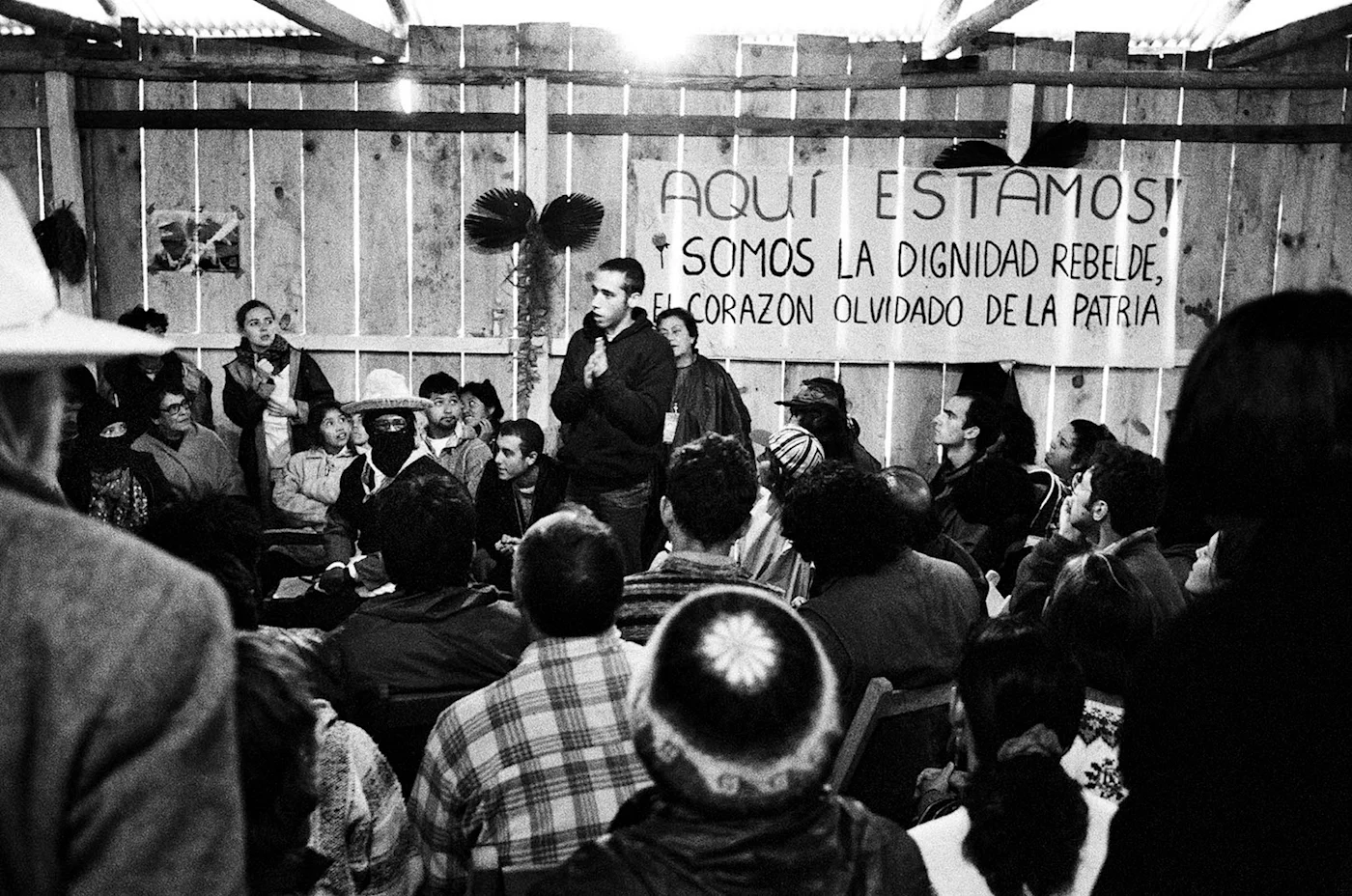

As the quotation from Marx seems to show, a government made up of councils and assemblies is only relevant if it is rooted in shared forms of life and constitutes a manifestation of collective energy that seeks to invigorate the commons. In this light, Zapatista self-government is a strengthened manifestation of the collective capacity to defend, reinvigorate, and transform from within communal forms of life felt to be proper. This is not “the conduct of conduct,” imposing a heteronomous conformation of ways of life, but rather a contribution to the extension of communal life through thriving individual and collective action. The rebels in Chiapas took care to explain what “freedom according to the Zapatistas” is: it is the art of governing themselves, which should be understood as not only the creation of specific bodies (councils, assemblies, etc.), but also and especially the collective self-determination of ways of life.38 By stating that “autonomy is the proper life of the people,” they express in their way this identification between autonomy and the self-determination of forms of life.39 Autonomy, in the fullest sense, involves weaving the ongoing invention of practices for self-organization and self-government together with the capacity to extend and transform forms of life that everyone feels to be proper.
Autonomy as a destituent process?
Without glossing over the clear divergences, we propose now to explore possible convergences between the perspective of autonomy, as seen we understand it from the Zapatista experiment, and the recently formulated destituent hypothesis.40 By destitution, we mean depriving power of its foundation and rendering it inoperative, which also involves countering the hypothesis of constituent power (a fiction that serves to justify a new constituted power taking over) with a destituent potential “that never resolves itself into a constituted power.”41
Firstly, almost thirty years of daily resistance has left the Mexican state, along with the logic of the world of the economy and the destruction it brings with it, practically inoperative within the Zapatista territories. It is undeniable that this is destitution concretely put into practice and, furthermore, on a scale rarely seen. Is not the ability to undo, or at least hold back, domination by both the state and the economy a manifestation of an effective destituent potential? Additionally, the concept of destitution emphasizes the oppositional dimension of the practice of autonomy, despite the emphasis placed on the positive dimension of constructing autonomy in the present. Conversely, bringing the two together offers a refutation of the argument that destitution is wholly negative. Our answer then is that this negative dimension should neither be avoided nor concealed, since this risks placing the struggle on the level of abstraction: there is no conceivable form of liberation that does not also understand itself as the destruction of the world of destruction. Lastly, and most importantly, Zapatista autonomy can clearly only be described as destituent to the extent that it is a way of strengthening and reinventing communal forms of life.
But a destituent process aims not only to undo the domination of the neoliberal state and malignant capitalism. As an affirmation, it is an ongoing process. Similarly, autonomy, as a struggle waged ceaselessly against anything that could harm it, is indeed an ongoing destituent process. Manifestly, autonomy, as it is conceived here, allows us to avoid the obsessive impulse to, even before any real transformation has occurred, draft a new constitution. This is a prime example of thinking like a state, stuck in an abstract approach based on unity. The Zapatistas have written no constitution of autonomy. On the contrary, despite all the practical challenges involved, they have chosen to embrace moving forward without a text, without a preexisting base to serve as a guide.42 For them, autonomy is a processual politics that cannot be (pre)determined by any sacred text: it is poles apart from constitutional fetishism.
A surprising part of the Zapatista experiment is their capacity to keep their forms of collective organizing fluid. In the various fields of activity (education, health, production, etc.) no less than in the bodies of autonomous government, practices are constantly being changed to respond to difficulties encountered along the way or to take into account new perspectives.43 No fixed forms, no fetishism of the instituted. Instead, here is a sort of permanent nervousness, fed by dissatisfaction, vigilance for mistakes, and the urge to correct them. In short, it is a process of experimenting to find a way forward, in accordance with the Zapatista principle “caminar preguntando” (walking while questioning), which is indispensable for preserving the experiment’s richness and fluidity. Autonomy is a politics of processuality, the very opposite of the instituted’s rigidity, ceaselessly transforming its forms of collective organization while also engaging in permanent struggle against anything that might challenge it.
As one of the maestros put it at the Escuelita, autonomy “has no end.” These words speak to a healthy awareness of the incompleteness of their ongoing experiment, and also to the way that building autonomy can never be considered perfect and complete. This dismisses any pretension of creating an ideal society that might, one day, claim to have reached its goal and to exist in its fullest expression. By recognizing the inherently processual dimension, as well as the necessity of struggling constantly against the risk of petrification in any instituted reality and against the reconstitution of a separate power, autonomy is truly a politics without end. In this respect, it is a destituent process, one that not only strives to make power inoperative, but struggles tirelessly so that processuality prevails over the fixed character of the instituted.
There remains some likely divergences between experiments in autonomy and the affirmation of a pure destituent potential, and this requires guarding against any modality of reinstitutionalization in favor of ongoing deinstitutionalization. But what exactly is meant by institution? We can in no way claim to settle such a thorny question, but we will offer a few reflections. Critiques of institutions are aimed at fixed entities, those that forcibly stabilize the real and interfere with the fluidity of forms of life, those that are instruments for consolidating a separate power and for dispossession by the state. It goes without saying that, defined in this way, institutions have no place in a practice like Zapatista autonomy, which we have said is a non-state, processual politics. On the other hand, though, this same experiment invites us to recognize that for a communal mode of existence to thrive, it requires organized bodies and rules developed and accepted by all those concerned. Can it be said that these bodies and rules are institutions? If the simple fact of being the subject of a fleeting agreement gives them a level of stabilization worthy of that word, then we have no choice but to accept it. Let us not forget though that they remain within the fluidity of forms of life and in the hands of a non-dissociated collective potential. There is thus no reason to believe that they are necessarily institutions in the sense of fixed entities that contribute to dispossessing and subjugating collective potential.
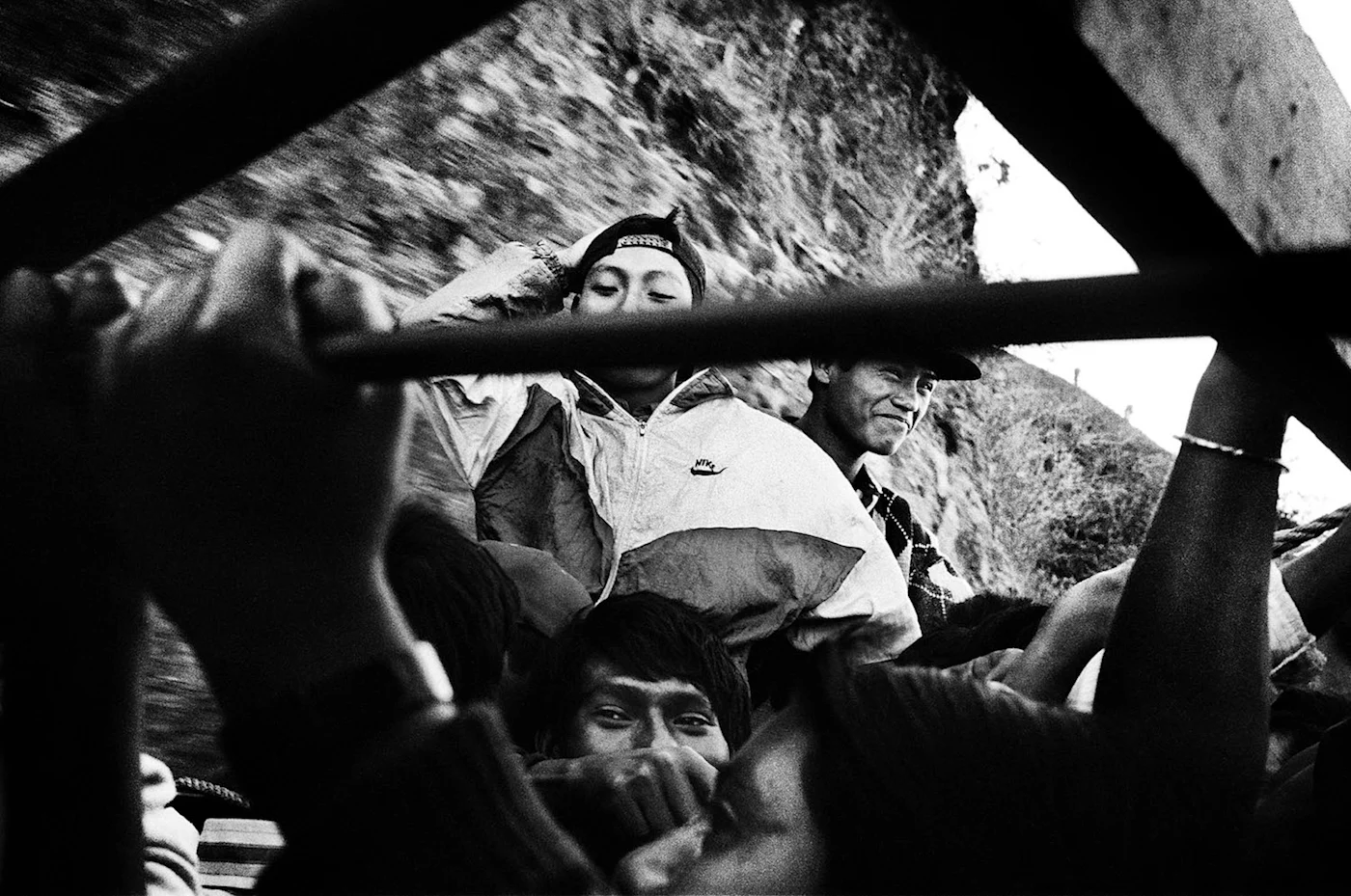
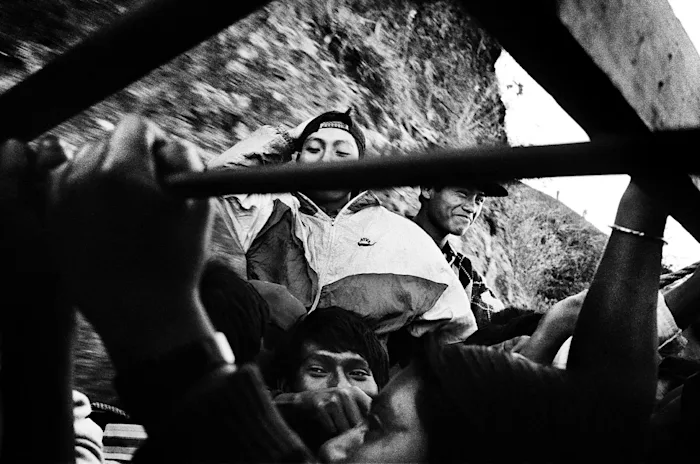
Let us add that although respect for customs and rules supports modes of life that have been adopted collectively, these can be modified at any time, but this mutability is itself a process and not a constant ex nihilo self-definition. Nothing is fixed as instituted, but the way of transforming the existent is a tributary of what is to be transformed, which, consequently, partially informs the way of modifying it. If we say that the richness of forms of life is what feeds and makes possible the destituent potential, it can also be asserted that, just as autonomy has no end, there is no such thing as completed destitution (likely because it is impossible to proclaim the complete richness of forms of life). For this reason, it is wise to recognize the impossibility of escaping from the unresolved tension between autonomy’s endless processuality and that which opposes it and may pose a threat, or from that between the drive for destitution and the role allocated to modalities of collective organization — which in fact already existed, the product of a shared history.
Conclusion
We propose that Zapatista autonomy be considered an experiment in destitution, in that it is being built in a context of complete secession from the Mexican state — with all the violent reaction and capacity to resist long-term that this entails. It is also an experiment in destitution, in that it allows for the extension of communal, self-determined forms of life, which can then be defended, come what may, against the advancing front of modernization/commercialization that seeks to destroy them. Anywhere autonomy thrives, the logic of the market has been partially undone and the Mexican state’s institutions do not enter: they have been concretely destituted, not only because they are rejected, but primarily because the establishment of a collective capacity for self-organization has made them inoperative, and therefore useless. It is certainly an impure destituent process, as it makes use of self-government bodies, which may, depending on the definition, be considered institutions, and so it is also — or especially — important to recognize that these bodies avoid the instituted’s petrification and remain instruments for spreading self-determined forms of life. If, as Serge Quadruppani once said, we are in the era of impure uprisings, then we can only expect impure experiments. Furthermore, experiments in autonomy do not inherently avoid the aspect of institutions most vulnerable to critique, that of being instruments of separate power. Autonomy is never entirely immune to the risk of reinstitutionalization, meaning the reappearance of a separate power, and, to have a chance of avoiding this danger, it is crucial to recognize it.
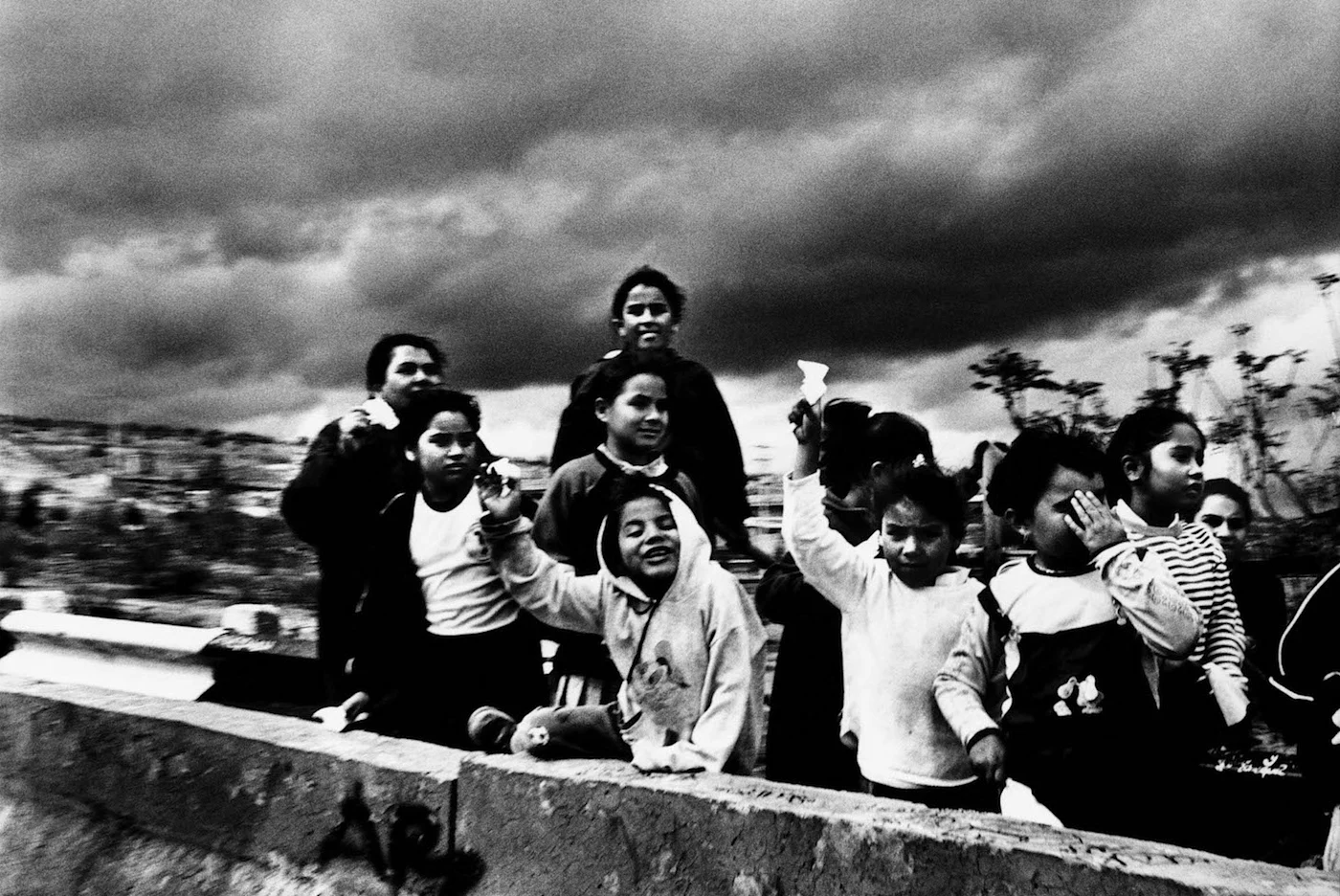

For this reason, we feel it useful to specify once again what a politics of autonomy is and, by so doing, what threatens it. To define autonomy as a non-state politics involves drawing a distinction, however uncertain its limits, between state and non-state forms of politics — between those that, through inherently dissociative modalities of delegation, consolidate the dispossession of the collective’s potential and its condensation into power-over, and those that strive, through non-dissociative modalities of delegation, to preserve and grow this collective potential, while preventing it from being captured by a separate entity. Seen this way, autonomy is not simply politics without a state, but truly a politics against the state, and not only because they are opposites, but also because autonomy implies the implementation of practical mechanisms intended to avoid reproducing state-like dissociation.
Let us not forget as well that autonomy is a situated politics, inscribed within a given territory’s distinctive features and the ways it is inhabited. It is necessary localized, anchored within the specific reality of the communities and collectives involved. Despite that, it is not exclusively confined to a local dimension, and even less to a restrictive localism, as it can, from its specific anchoring point, open towards other horizons and interregional forms of exchange and coordination.44 Indeed, the Zapatista rebels’ experiment shows that it is possible to break free of the false opposition between suffocating localism and abstract universalism. By calling into being “a world where many worlds fit,” they gesture towards a horizon in which the global dimension is meaningful only insofar as it is understood starting from local specificities and the multiplication of experiments. Because it is a situated politics, autonomy is necessarily also a politics of multiplicity.
Finally, autonomy cannot be defined solely in political terms. It supposes that implementing practices of self-government is inseparable from extending self-determined ways of life felt to be proper. This is the only way to grasp autonomy in its broadest sense, in which the need for non-state politics is linked to a drive towards liberation that allows everyone to preserve the possibility of a good and dignified life, without social relations of domination and with respect for the web of interdependence that makes up the living world.45
Translated by Cédrine Michel.
Special thanks to Michael Hardt and SAQ for assistance with translation funds.
Images: Mat Jacob
Notes
1. A further expansion of autonomy was announced in August 2019 with the creation of four autonomous communes and seven Councils of Good Government.↰
2. For the idea of liberated spaces, see Jérome Baschet, Adieux au capitalisme: Autonomie, société du bien vivre et multiplicité des mondes, La Découverte, 2016. On real utopias, see Erik Olin Wright, Envisioning Real Utopias, Verso, 2010. For a critique, see Baschet, “Quels espaces libérés pour sortir du capitalisme? A propos d'Utopies réelles d'Erik Olin Wright.” Ecorev', no. 46, 2018 and Baschet, Basculements: Mondes émergents, possibles désirables, La Découverte, 2021. ↰
3. Mariana Mora, Kuxlejal Politics: Indigenous Autonomy, Race and Decolonizing Research in Zapatistas Communities, University of Texas Press, 2017.↰
4. Jérôme Baschet, Basculements: Mondes émergents, possibles désirables, La Découverte, 2018.↰
5. For the notion of “comunalidad” that was developed in the state of Oaxaca, see in particular Diaz (2007).↰
6. Subcomandante Marcos, “Entre el árbol y el bosque.” Presentation at the conference “Frente al despojo capitalista, la defensa de la tierra y el territorio,” Mexico, July 12, 2007.[Unless otherwise noted, all translations from sources are mine. —Trans.]↰
7. Jérôme Baschet, ¡Rebeldía, resistencia y autonomía! La experiencia zapatista, Editorial Eon, 2018, 196-212. In this respect, the idea of community held by the Zapatistas is closer to Agamben’s “inessential commonality” than to what might be called communitarianism. See Giorgio Agamben, The Coming Community, translated by Michael Hardt, Minnesota University Press, 1993, 17. ↰
8. Richard Stahler-Sholk, “Autonomía y economía política de resistencia en Las Cañadas de Ocosingo,” in Luchas “muy otras”: Zapatismo y autonomía en las comunidades indígenas de Chiapas, edited by Bruno Baronnet, Mariana Mora and Richard Stahler-Sholk, UAM-CIESAS-UNACH, 2011, 409-446.↰
9. Subcomandante Moisés, “Political Economy II,” in Critical Thought in the Face of the Capitalist Hydra ed. EZLN Sixth Commission, edited by the Sixth Commission of the EZLN, Paperboat Press, 2016, 77-88.↰
10. Bruno Baronnet, Autonomía y educación indígena: Las escuelas zapatistas de la Selva Lacandona en Chiapas, México, Abya-Yala editores, 2012.↰
11. Jérôme Baschet, “En camino fuera del mundo del dinero: Apuntes sobre la autonomía zapatista.” Herramienta, no. 57, 2015. Online here.↰
12. Jérôme Baschet, Défaire la tyrannie du présent: Temporalités émergentes et futurs inédits, La Découverte, 2018.↰
13. The Zapatistas laid out autonomy’s advances, as well as its difficulties, in the textbooks they prepared for the Escuelita zapatista that took place between August 2013 and January 2014, hosting nearly 5,000 people in rebel villages. See EZLN, The First-Grade Textbook for the Course: Freedom According to the Zapatistas. 4 vols.n.p., 2013. See also Subcomandante Moisés, “Political Economy II.”↰
14. Paulina Fernandez Christlieb, Justicia Autónoma Zapatista. Zona Selva Tzeltal, Ediciones autonom@s, 2014.↰
15. It is worth noting here the distinction between the ethic of service in Indigenous traditions and pastoral power, identified by Michel Foucault as part of the genealogy of modern governmentality (the pastor being a leader who “must experience his responsibility as a service”). See Michel Foucault, Security, Territory, Population. Lectures at the Collège de France (1977-1978), translated by Graham Burchell, Palgrave Macmillan, 2007, 179. Notice that here, service is tied to an overtly hierarchical relation and constitutes a well-intentioned modality of relations of obedience, whereas in the Indigenous world it is understood as a contribution to the production of a community bond. ↰
16. Serving by carrying out a responsibility is simply an aspect of the reciprocity that constitutes community belonging: it is a way “to make the community.” See Rafael Bautista, La descolonización de la política. Introducción a una política comunitaria, Cideci-Unitierra. 2014, 147.↰
17. EZLN, “Autonomous Resistance,” in The First-Grade Textbook for the Course:Freedom According to the Zapatistas. n.p., 2013, 73.↰
18. Subcomandante Marcos, The Zapatistas’ Dignified Rage, translated by Nick Henck, AK Press, 2012, 131.↰
19. Carlos Lenkersdorf, Aprender a escuchar, Plaza y Valdés, 2008.↰
20. From oral presentations made during the Escuelita zapatista at CIDECI-Uniterra in San Cristobal de Las Casas in August 2013. [For this and all other translations of oral remarks from the Escuelita, I am grateful to my colleague Marialaura Boscán Peraza for translating them from the author’s transcription of the Spanish. —Trans]↰
21. We cannot ignore the existence of the Ejército Zapatista de Liberación Nacional (EZLN), a political and military organization existing alongside the civil structures of autonomy. It is openly acknowledged that “the EZLN is not democratic, because it is an army.” See EZLN, Sixth Declaration of the Selva Lacandona, 2005 (online here). During the creation of the Juntas de buen gobierno, it was established that officials in the EZLN’s political-military structures could not take on the civilian responsibilities of autonomy. However, the active role of commanders, members of the Clandestine Revolutionary Indigenous Committee, alongside the Councils of Good Government has always been recognized and sometimes criticized; it is described in very direct terms in the manuals from the Escuelita. See EZLN, The First-Grade Textbook for the Course: Freedom According to the Zapatistas, 2013. So among the reasons why autonomy is a process, the political-military leaders of the EZLN are returning the power that had been conferred to them by the communities and civil governing bodies, but this is ongoing and incomplete. See Jérôme Baschet, ¡Rebeldía, resistencia y autonomía! La experiencia zapatista, Editorial Eon, 2018, 88-94.↰
22. Maestro Fidel, oral presentation, Escuelita zapatista, CIDECI, August 2013.↰
23. Maestro Jacobo, oral presentation, Escuelita zapatista, CIDECI, August 2013.↰
24. For the distinction between power-to and power-over, see John Holloway, Change the World Without Taking Power, Pluto Press, 2002, 18-19.↰
25. Maestro Jacobo, 2013. ↰
26. Maestra Eloisa, oral presentation, Escuelita zapatista. CIDECI, August 2013.↰
27. Giorgio Agamben, Stasis: Civil War as a Political Paradigm, trans. Nicholas Heron, Stanford University Press, 2015.↰
28. Agamben, Stasis, 51.↰
29. Erik Weil, Hegel and the State, trans. Mark A. Cohen, John Hopkins University Press, 1998, 69.↰
30. Weil, Hegel and the State, 69.↰
31. For the opposition between the state and democracy, see Miguel Abensour’s Democracy Against the State: Marx and the Machiavellian Movement (2011) and Pour une philosophie politique critique (2009).↰
32. Autonomy could also be understood as an “anti-politics.” See John Holloway, Change the World Without Taking Power, Pluto Press, 2002. The expression corresponds quite closely to what we are calling here non-state politics (common dignity and the ability for everyone to participate in determining collective actions, the primacy of the horizontal over the vertical and of a processual approach over any kind of rigidity, the integration of ethical and political concerns...↰
33. See Foucault, Security, Territory, Population; and Giorgio Agamben, The Kingdom and the Glory, trans. Lorenzo Chiesa, Stanford University Press, 2011.↰
34. For an argument that as state structures crumble, governmentality increases, see Invisible Committee, To Our Friends, translated by Robert Hurley, Semiotext(e), 2015. Online here.↰
35. Pierre Dardot and Christian Laval, Dominer: Enquête sur la souveraineté de l’État en Occident, La Découverte, 2020.↰
36. The quotation is from Theodor Shanin, Late Marx and the Russian Road, Monthly Review Press, 1983, 89, which cites Karl Marx and Friedrich Engels, Writings on the Paris Commune, ed. Hal Draper. Monthly Review Press, 1971, 153.↰
37. Eduardo Viveiros de Castro, Cannibal Metaphysics, Minnesota University Press, 2014. Although there are major differences between Amazonian peoples and the Mayan world (which experienced state domination even before the Spanish conquest), the work of Pierre Clastres is a useful starting point for reflection, in particular his development of the figure of “the chief without power,” with whom the framing of “responsibilities” and “mandar obedeciendo” bear a certain resemblance. See Pierre Clastres, Society Against the State, Zone Books, 1987, 206-208). See also Eduardo Viveiros de Castro, Politique des multiplicités: Pierre Clastres face à l’État, Éditions Dehors, 2019.↰
38. EZLN, The First-Grade Textbook for the Course: Freedom According to the Zapatistas.↰
39. For example, this is said in the play entitled “Life and Death” presented by the Zapatistas from the region of La Realidad during the festival “Comparte por la humanidad” in caracol Morelia, on August 9, 2018. ↰
40. See Agamben, Stasis; and The Invisible Committee, To Our Friends. Autonomy and destitution are also brought together in Marcello Tarí and Vicente Barbarroja, “Azufre rojo. El retorno de la Autonomía como estrategia,” in Marcello Tarì, Un comunismo más fuerte que la metropoli: La Autonomía italiana en la década de 1970, Traficantes de Sueños, 2016.↰
41. Giorgio Agamben, The Use of Bodies, trans. Adam Kosko, Stanford University Press, 2016, 268.↰
42. “We did not have a guide, we did not know how to make autonomy. […] We do not have a book to look at, to follow …” EZLN, Autonomous Government, Bk. 1. From The First-Grade Textbook for the Course: Freedom According to the Zapatistas, 44. ↰
43. “Everything that we do is a step, it is necessary to see if it works or if not it is necessary to change it.” EZLN, Autonomous Government, 54.↰
44. Jérôme Baschet, Basculements: Mondes émergents, possibles désirables, La Découverte, 2021.↰
45. Rather than creating an opposition between interdependence (with others or with the nonhuman world) and autonomy, understood as the self-determination of forms of life, we propose the following textto articulate autonomy (meaning the refusal of heteronomy, which involves domination and submission) with heterotrophy (obtaining nourishment from ties with others, such that they are seen as constitutive of ourselves): Jérôme Baschet, “Conception relationnelle de la personne, communauté et autonomie politique,” Itinérances, ed. Josep Rafanell i Orra, Divergences.↰